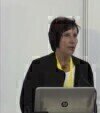Ammonia Slip Monitoring for NOx Control
Burning coal and other fossil fuels is widely used for generating electricity or thermal heat, but because of the combustion process, particulate matter and nitrogen oxides (NOx) are released into the atmosphere.
NOx and dust are the leading cause of human respiratory issues and government agencies worldwide are releasing stronger regulatory measures designed to reduce air pollution. In countries like the United States, offer NOx trading credits for excess reduction, making it more valuable than even fuel savings to a plant owner. Even if NOx credits are not available, prolonging the lifetime of the NOx reduction equipment also makes economic sense as it greatly reduces operating costs.
The two main NOx control strategies are Selective Catalytic Reduction (SCR) and Selective Non-Catalytic Reduction (SNCR), both based upon the use of ammonia (NH3) or urea to participate in the suppression of NOx formation. SCR and SNCR both rely on accurate NH3 or urea dosing to reduce NOx formation.
NH3 overdosing (called NH3 slip) causes the formation of ammonium bisulfate (ABS) precipitation - a white powder that forms when sulfur trioxide (SO3) is present (especially when coal is burned). The ABS deposits on and eventually plugs the NOx reduction catalyst, but it can also cause fouling or corrosion of boilers or, for those power plants that sell their fly ash to the cement industry, it results in sub-standard product which is no longer fit for use.
Traditional NH3 slip process monitoring methods have in the past used extractive sampling techniques with an infrared (IR) based analyzer. A sample of the gas must be transported to the analyzer which results in a delay of up to 30 seconds in the reported NH3 value which makes this an unreliable process control trigger.
A carefully controlled NH3 slip of < 2ppm is needed to optimize the process and without a direct gas measurement it will be difficult as many parameters influence the process including the inlet NOx concentration, fuel composition and catalyst performance. Rapid and accurate monitoring of the NH3 slip saves millions by providing a feedback process loop that reduces NOx and ABS formation.
Free to watch
Sessions are free to watch. Please login to view this session or create an account.
Speakers

Barbara Marshik (Power at Servomex)
Extensive product development and product marketing experience handling multiple products and markets across a global customer base. Over 25 years of New Product Development at both small and large firms including providing market directions through direct customer networking and VOCs. Reputation for developing creative strategies and solutions to meet the most challenging customer requirements.
Digital Edition
AET 28.3 September 2024
September 2024
Business News - ENVEA announces acquisition of APAQ Group - SICK and Endress+Hauser sign strategic partnership - Efforts to curb gas flaring intensify amid environmental concerns Air Monito...
View all digital editions
Events
WEATHER • CLIMATE • WATER / EARTH OBSERVATIONS / GREEN ECONOMY
Oct 29 2024 St. Petersburg, Russia
Oct 30 2024 Hong Kong
Nov 05 2024 Toronto, Canada
Nov 05 2024 Rimini, Italy
Nov 06 2024 Ho Chi Minh City, Vietnam















